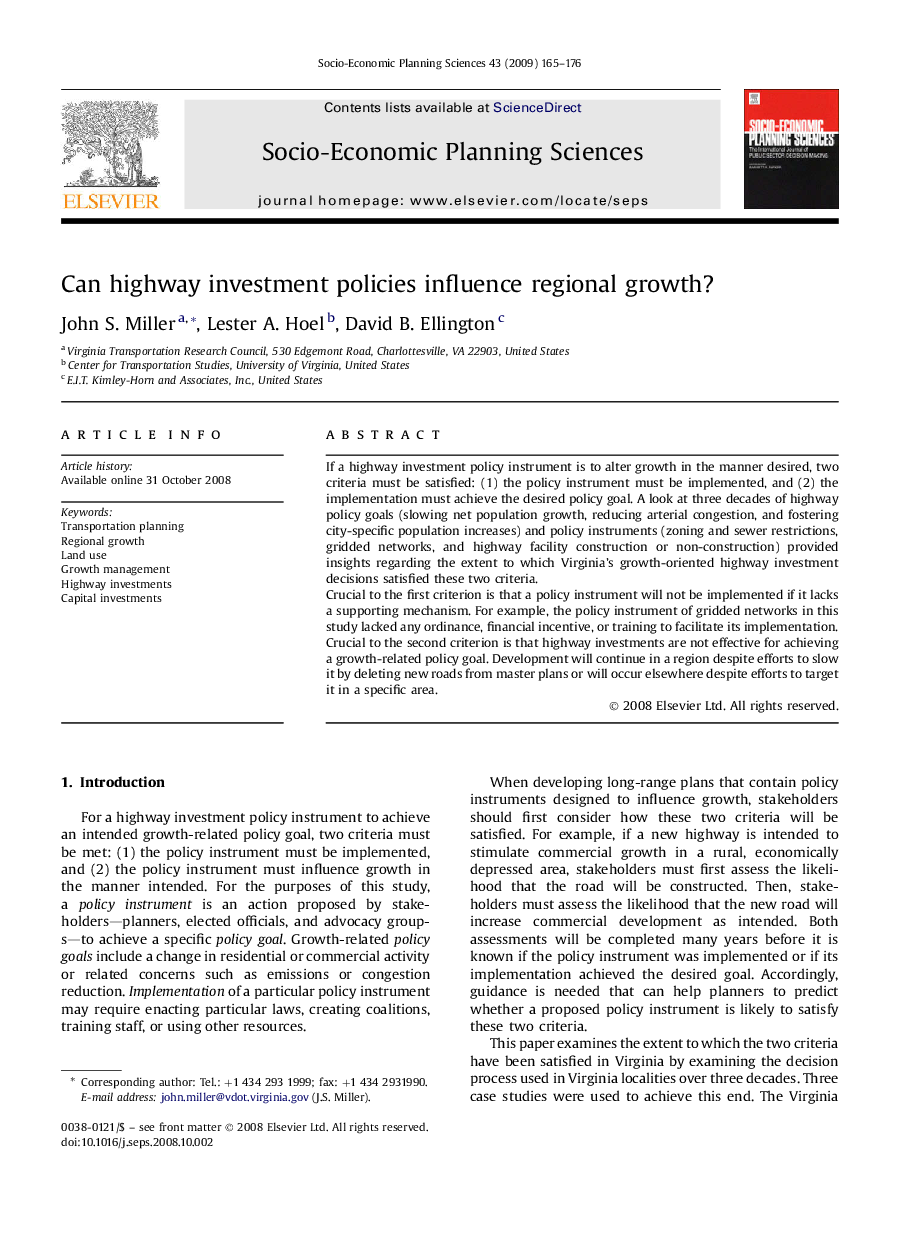| Article ID | Journal | Published Year | Pages | File Type |
|---|---|---|---|---|
| 987501 | Socio-Economic Planning Sciences | 2009 | 12 Pages |
If a highway investment policy instrument is to alter growth in the manner desired, two criteria must be satisfied: (1) the policy instrument must be implemented, and (2) the implementation must achieve the desired policy goal. A look at three decades of highway policy goals (slowing net population growth, reducing arterial congestion, and fostering city-specific population increases) and policy instruments (zoning and sewer restrictions, gridded networks, and highway facility construction or non-construction) provided insights regarding the extent to which Virginia's growth-oriented highway investment decisions satisfied these two criteria.Crucial to the first criterion is that a policy instrument will not be implemented if it lacks a supporting mechanism. For example, the policy instrument of gridded networks in this study lacked any ordinance, financial incentive, or training to facilitate its implementation. Crucial to the second criterion is that highway investments are not effective for achieving a growth-related policy goal. Development will continue in a region despite efforts to slow it by deleting new roads from master plans or will occur elsewhere despite efforts to target it in a specific area.
